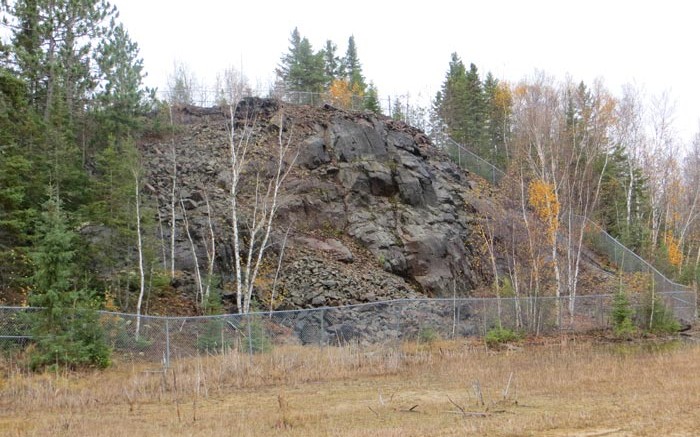Privately held Sudbury Platinum, in which project-generator Transition Metals (TSXV: XTM; US-OTC: TNTMF) holds a 57% stake and Royal Nickel (TSX: RNX; US-OTC: RNKLF) a 23% interest, has acquired 100% ownership of the Aer-Kidd project, 20 km southwest of Sudbury, Ont.
Late last month Sudbury Platinum paid CaNickel Mining (TSX: CML; US-OTC: CMLGF) (formerly Crowflight Minerals) $1.3 million to complete the purchase of the mineral rights to the nickel–copper–platinum group metals project in northern Ontario.
Sudbury Platinum already has the option to purchase 100% of the surface rights to Aer-Kidd from the City of Greater Sudbury before Dec. 31, 2017, for $250,000, with another $250,000 due if commercial production is achieved.
Now the junior is focused on executing a drill program that will test targets generated below the historic mine workings on the property. Aer-Kidd hosts the formerly producing Howland pit and the Robinson and Rosen mines, which were small deposits exposed at surface that were mined down to 300 metres deep.
The Aer-Kidd property covers a 1.4 km section of the Worthington offset dyke, 2.6 km northeast along strike of Vale’s (NYSE: VALE) producing Totten mine and 4.3 km southwest and along trend of KGHM Polska Miedz’s (US-OTC: KGHPF) Victoria project, which is being developed. (Quadra FNX held the Victoria property until its acquisition in February 2012 by KGHM.)
“Aer-Kidd is a really unique project in the world-class Sudbury igneous complex,” CEO of Sudbury Platinum and president and CEO of Transition Metals Scott McLean said. Transition Metals spun off the Aer-Kidd project into the private subsidiary about a year ago.
McLean notes that the Totten mine was mined in the early 1900s and again in the early 1970s by Inco. “They mined about 1 million tonnes out of the upper parts of the mine, and it wasn’t until the 1990s that they discovered Totten Deep mine, which is 10.1 million tonnes of 1.5% nickel, 1.97% copper and 4.8 grams per PGM,” McLean says. A geologist by training, McLean was part of the four-member team at Falconbridge that in 2001 discovered the high-grade Nickel Rim South deposit in Sudbury.
“The Victoria deposit is on the other side of us and is similar to Totten — also mined in the early 1900s, and again in the early 1970s — with 1.5 million tonnes of fairly good grades in the upper part of the mine. In 2008, FNX went downdip and came up with the Victoria Deep mine. It’s a jewellery box of 14.5 million tonnes grading 2.5% nickel, 2.5% copper and 7.6 grams per tonne PGMs. And our property is at the centre, right in between them.”
McLean notes that there were two companies — one Canadian, one Mexican — that were interested in acquiring CaNickel Mining’s stake in Aer-Kidd, but fortunately Sudbury Platinum had the right of first refusal.
He says Sudbury Platinum could quickly raise funds for drilling. “There are some flow-through funds looking at it right now, and other strategic investors are looking at it,” he confirms. “We’re quite confident that we’ll raise another $1.2 million to $1.5 million within the next couple of weeks.”
McLean points out that the Sudbury camp is controlled by a couple of main players — Vale and Glencore — with holdings at KGHM, making Sudbury Platinum stand out. “Aer-Kidd is one of the few properties in the camp with this high level of prospectivity that has no Vale, Glencore or KGHM talons attached to it. We have 100% ownership,” he says.
He notes that CaNickel’s predecessor company Crowflight Minerals had drilled holes down below the old workings at the project in 2003 and 2004, but didn’t intersect much mineralization because, in his view, they had used an EM 37 borehole system, “which in Sudbury is incapable of seeing superconductors that massive sulphides produce in the Sudbury camp.”
Sudbury Platinum used the UTEM IV system, and identified targets at the end of 2013 that it says the old system “wasn’t able to.”
In January 2014 the company reported mineralization on the southwestern side at a 750-metre depth, and the second down 1,100 metres.
“We don’t know enough about the property yet,” he says, “but what’s interesting is that the higher grade of the other systems (Totten Deep and Victoria Deep) seem to be deeper and are in the 1,000- to 1,500-metre range.”
“The Worthington dyke has not really been explored because most of the property has been controlled by Inco,” he adds. “It’s just in recent years — in the late 1990s and 2000–2008 — that Inco and FNX started testing the dyke and came up with these orebodies. So we’re hopeful and encouraged that as we continue to explore our property we’re going to be able to discover world-class orebodies similar to Totten and Victoria.”


Be the first to comment on "Sudbury Platinum advances Aer-Kidd"